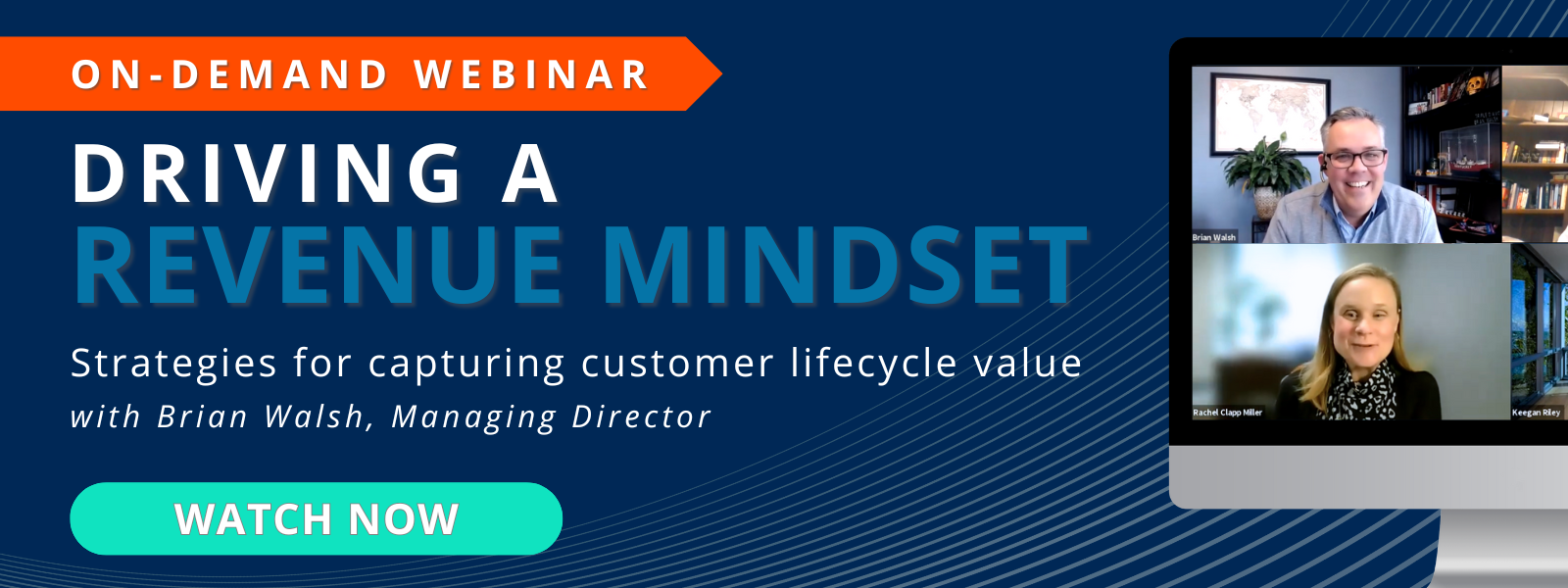
3 Actions to Grow Recurring B2B Sales Revenue
Categories: Sales Transformation | Company Alignment | Scaling Sales
In our recent webinar with Force Management Managing Director and Facilitator Brian Walsh, an audience member posed a question that we hear often in our work with B2B sales organizations:
As a sales leader, what actions can I take to not just secure repeatable revenue, but also achieve growth?
Brian outlined three clear steps that successful sales leaders take to grow net recurring revenue. Today, we’re breaking them down a bit further. You can also watch our full conversation with Brian for more growth strategies.
1. Enable Great Opportunity Coaching
The first element to securing sustainable growth in recurring revenue is winning consistently. Training and methodology provide the foundation, but the most critical element is a commitment to great coaching. Turning methodology into a consistent, repeatable sales motion requires hands-on guidance.
So often, managers are given a list of must-haves for their reps. Questions like, “Have you identified a business pain?,” “Did you identify the economic buyer?,” or “Do you have a champion?,” are based on inspection, not coaching. Ensure that managers have the skills, bandwidth, and framework to work with reps to provide the how of your sales strategy.
Opportunity reviews are where your sales strategy is operationalized. When executed correctly, these meetings can help maximize the value of every deal and prevent slipped or delayed deals. Invest in equipping managers with the skills and tools to make their reviews valuable, and provide a clear example of what great looks like for coaches in your organization. Start with our best resources on enabling front-line managers.
|
|
|
- Brian Walsh, Driving a Revenue Mindset |
Project44 attributed their 115% year-over-year growth in annual recurring revenue in part to their revised approach to opportunity reviews, which former CSO Craig Lewis called “a completely changed dynamic.” Read more about the changes they implemented.
2. Develop Clear Benchmarks for Success
Achieving growth on recurring revenue metrics requires an exceptional level of value to the customer. If you don’t have follow-through on the promises you made at the initial sale, you’re going to have an uphill battle when the renewal comes.
To avoid the renewal scramble, it’s crucial to ensure that your deals don’t just have long-term success metrics, but also defined leading indicators of success. Your sales team needs to be laser-focused on promising the customer their desired outcomes - increasing new customer acquisition, reducing time to market, lowering costs. These will help you get the initial sale, but they may be hard for your post-sale implementation teams to execute on right away.
Setting short-term benchmarks of success not only helps your team prove value to the customer sooner; it also gives Customer Success a way to gauge the health of the account and adjust their approach to ensure that the long-term goals are met on the offered timeline. Give your team a blueprint for what your most successful accounts look like early on so they have a marker of success to compare with each engagement. Implement tools to measure adoption rates and provide an action plan for addressing accounts that fall behind.
|
|
|
- Brian Walsh, Driving a Revenue Mindset |
This approach comes from what we refer to as an outcome mentality. So many sales teams are just focused on securing the win and making the forecast. If your team comes in from the start of the sales cycle with a clear plan for what success looks like in three, six, twelve months and beyond, it not only improves your ability to deliver and secure renewals but shows the customer you’re committed to their outcomes.
3. Cultivate a Culture of Collaboration
Teams that consistently deliver on renewal and upsell deals have what we call a Revenue Mindset - a cross-functional approach that places value at the heart of every customer interaction, ensuring consistency across the customer lifecycle.
The modern customer journey takes a lot of forms. Buyers have access to a wealth of information about you and your competitors online both before and during their engagement with Sales, while companies leverage a variety of product models including freemium and consumption pricing. Providing a consistent value message at every touchpoint is crucial to progressing deals forward. That means Product, Marketing, Customer Success and Sales teams share information about customer pain, use cases, and proof points to enable a more holistic sales message.
Alignment between all go-to-market teams also allows you to offer a new level of value. When sales reps involve Customer Success and Sales Engineer roles in their process, whether in conversations or behind the scenes, they can gain a deeper understanding of customer problems, their causes and how your solution is uniquely positioned to solve them.
These are just a few examples of how cross-functional alignment deepens customer value. Every organization has a different dynamic, but process alignment across the GTM organization is fundamental to unlocking growth. As a sales leader, you can enable alignment by providing a point of view on how great handoffs and information sharing happen within your team. What are the trigger events where another team gets involved in a customer conversation? What information is being shared? What actions are being taken?
|
|
|
- Brian Walsh, Driving a Revenue Mindset |
More Strategies to Grow NRR for B2B Sales
If you found the strategies in this blog valuable, check out our full webinar conversation with Brian Walsh on Driving a Revenue Mindset: Strategies for Capturing Customer Lifecycle Value. He shares how sales leaders can equip their teams to access decision-makers, gain buy-in from complex buying committees, and drive urgency for their solution.


